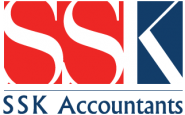risk election budget.
risk election budget.
1.1 Individuals and Families:
From 1 July 2016, the government will increase the 32.5% personal income tax threshold from $80,000 to $87,000 . This measure will reduce the marginal rate of tax on incomes between $ 80,000 and $87,000 from 37% to 32.5%, preventing around 500,000 taxpayers facing the 37% marginal tax rate.
1.2 Good News for Small Businesses: Unincorporated small business tax
discount increased (‘SBITO’):
From 1 July 2016, the government will increase the current 5% tax discount (referred to as the SBITO) to 8%. The discount is currently available to an individual in receipt of income from an unincorporated small business entity (‘SBE’) (i.e., basically, an entity with an aggregated turnover of less than $2 million), and applies to the income tax payable on the business income received from such an entity.
The discount will be increased in phases as follows :
| Income year | Discount rate |
|---|---|
| 2016-17 to 2023-24 | 8 per cent |
| 2024-25 | 10 per cent |
| 2025-26 | 13 per cent |
| 2026-27 and later | 16 per cent |
The current tax discount (or SBITO) cap of $1,000 per individual for each income year will be retained. Furthermore, access to the discount will be extended to individual taxpayers with business income from an unincorporated business that has an aggregated annual turnover of less than $5 million.
1.3 Staggered cuts to company tax rates :
The government will reduce the company tax rate to 25% over 10 years (i.e., by 1 July 2026). This measure will commence from 1 July 2016, whereby the government will cut the small busines company tax rate to 27.5%, and make this tax rate available to small companies with an annua aggregated turnover of less than $10 million. This turnover threshold will then be progressively increased to ultimately have all companies eligible for the 27.5% tax rate in 2023/24. The progressive increase in the annual aggregated turnover thresholds for companies eligible for the 27.5% tax rate will be as follows:
| Income year | Annual threshold |
|---|---|
| 2018/19 | $50.0 million |
| 2019/20 | $100.0 million |
| 2020/21 | $250.0 million |
| 2021/22 | $500.0 million |
| 2022/23 | $1 billion |
In the 2024/25 income year, the company tax rate will be reduced to 27% and then be reduced progressively by 1 percentage point per year until it reaches 25% in the 2026/27 income year. Franking credits will be distributed in line with the rate of tax paid by the company
1.4 Increasing the small business entity (‘SBE’) turnover threshold:
From 1 July 2016, the government will increase the SBE turnover threshold from $2 million to $10 million. The current $2 million turnover threshold will be retained for access to the small business capital gains tax (‘CGT’) concessions, and access to the SBITO (i.e., the increased 8% tax discount) will be limited to entities with turnover less than $5 million (as noted above). The increased $10 million turnover threshold will allow an additional 90,000 to 100,000 business entities to gain access to certain small business concessions, such as the following: ? The lower (27.5%) small business corporate tax rate (noted above). ? The simplified depreciation rules in Subdivision 328-D of the ITAA 1997 (including the ability to claim an immediate deduction for an asset purchased costing less than $20,000 until 30 June 2017). ? Simplified trading stock rules, giving businesses the option to avoid an end of year stocktake if the value of their stock has changed by less than $5,000. ? The option to account for GST on a cash basis and pay GST instalments as calculated by the ATO.
Other Budget announcements
2.1 Medicare levy low income thresholds for 2015/16:
For 2015/16, the Medicare Levy low income thresholds will be as follows:
| Individuals | $21,335 | (previously $20,896) |
| Families | $36,001 | (previously $35,261) |
The family income threshold (i.e., $36,001) will be increased by $3,306 (previously $3,238) for each dependent child or student. For single seniors and pensioners with no dependants who are eligible for the seniors and pensioners tax offset, the threshold will be increased to $33,738 (previously $33,044).
2.2 Applying GST to low value goods imported by consumers:
From 1 July 2017, GST will be extended to low value goods imported by consumers. The intent of this measure is to ensure that low value goods imported by consumers face the same tax regime as goods sourced domestically. Overseas suppliers that have an Australian turnover of $ 75,000 or more will be required to register for, collect and remit GST for low value goods supplied to consumers in Australia, using a vendor registration model.
Superannuation Developments
3.1 Lifetime cap for non-concessional superannuation contributions:
The government will introduce a $500,000 lifetime non-concessional contributions cap. The lifetime cap will take into account all non -concessional contributions made on or after 1 July 2007 (i.e., from the 2008 income year) and will be indexed in $50,000 increments in line with average weekly ordinary times earnings
3.2 Changes to TRIS :
From 1 July 2017, the government will remove the tax exemption on earnings of assets supporting Transition to Retirement Income Streams (‘TRIS’), being income streams of individuals over preservation age but not retired. Earnings from assets supporting a TRIS will be taxed at 15%. Importantly, this change is proposed to apply irrespective of when the TRIS commenced.
3.3 Superannuation transfer balance cap of a $1.6 million introduced :
From 1 July 2017, the government will introduce a $1.6 million ‘superannuation transfer balance cap’ on the total amount of accumulated superannuation an individual can transfer into pension phase. Subsequent earnings on this pension balance will not be restricted.
3.4 Reducing the concessional contributions cap :
From 1 July 2017, the government will lower the annual cap on concessional superannuation contributions to $25,000. Until this time, the existing concessional contributions caps, being $30,000 for those aged under age 50 years, and $35,000 for those aged 50 years and over, will apply.
3.5 Harmonising contribution rules for people aged 65 to 74:
From 1 July 2017, the government will remove the current restrictions on people aged 65 to 74 from making superannuation contributions for their retirement. Specifically, the government will remove the requirement that an individual aged 65 to 74 must meet the ‘work test’ before making voluntary or non- concessional contributions to superannuation.
3.6 Restrictions on personal superannuation contribution deductions eased :
From 1 July 2017, the government will change the law to allow all individuals under age 75 to claim an income tax deduction for personal superannuation contributions. Individuals who are, for example, partially self-employed and partially wage and salary earners, and individuals whose employers do not offer salary sacrifice arrangements will benefit from the proposed changes.
3.7 Changes to the ‘high income contribution rules’ (Division 293):
Currently, Division 293 imposes an additional tax of 15% on certain concessionally taxed contributions (e.g., certain concessional contributions) where an individual’s total ‘income’ (basically, ‘income for surcharge purposes’ less reportable superannuation contributions) plus certain ‘concessionally taxed contributions’ for an income year exceed $300,000. Concessional contributions subject to tax under Division 293 are effectively taxed at 30%.
3.8 Low income spouse tax offset threshold increased:
From 1 July 2017, the government will increase access to the low income spouse superannuation tax offset by raising the income threshold for the low income spouse to $37,000 (from $10,800). The offset is gradually reduced for income above this level and completely phases out at income above $40,000. The low income spouse tax offset provides up to $540 per annum for the contributing spouse. In addition to the above, the government will make additional changes to support older Australians, including allowing individuals to make contributions on behalf of their spouse who is under age 75, without the need for the spouse to satisfy the work test.
3.9 Low Income Superannuation Tax Offset (LISTO) introduced :
From 1 July 2017, the government will introduce a Low Income Superannuation Tax Offset (‘LISTO’) to reduce tax on superannuation contributions for low income earners. The LISTO will provide a non-refundable tax offset to superannuation funds, based on the tax paid on concessional contributions made on behalf of low income earners, up to a cap of $500. The LISTO will apply to members with adjusted taxable income of up to $37,000 that have had a concessional contribution made on their behalf. Source: NTAA, CPA,TheAge
For further information, please contact Manpreet Singh of SSK Accountants at 03 8759 0629.



